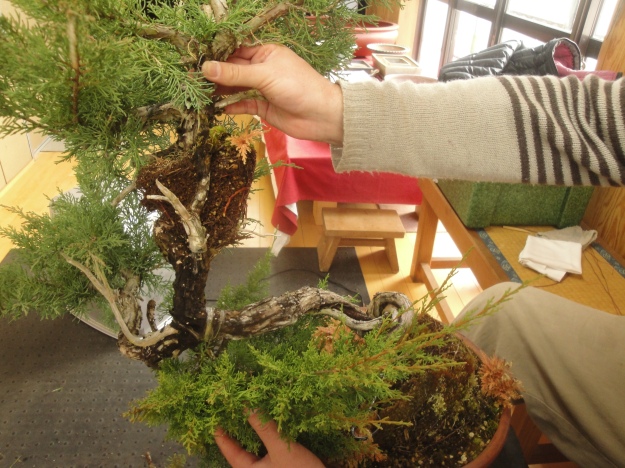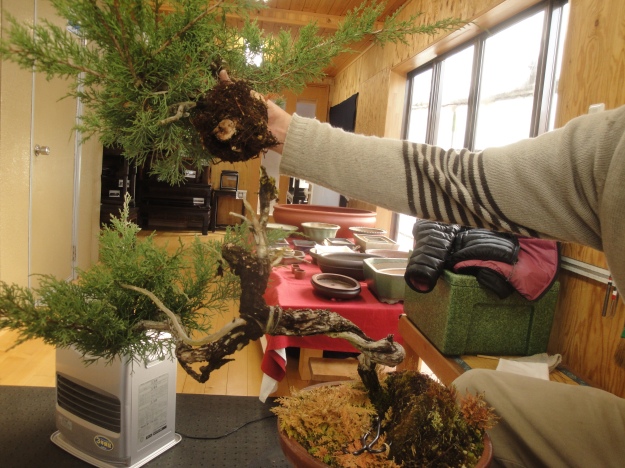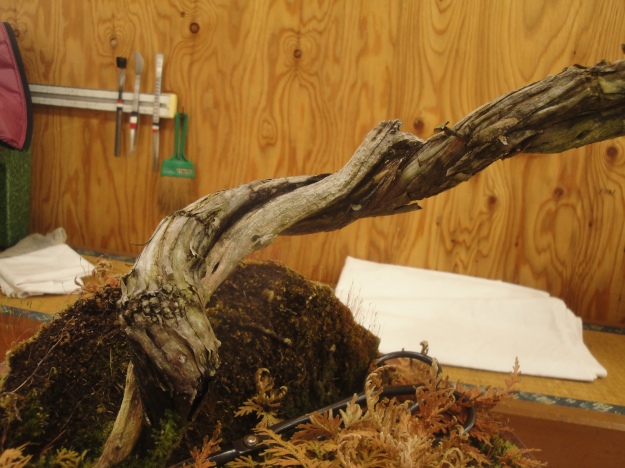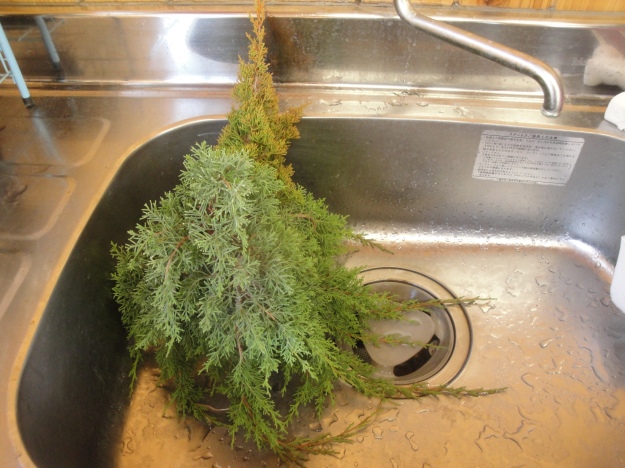Japanese Bonsai deserving to be deemed “Kichou Bonsai” (important Bonsai masterpiece) most likely have a long history living in a pot maintained by caring individuals throughout the past. Even during difficult times such as WWII, Bonsai stayed alive because people never wavered in keeping them that way. In my mind, Kichou Bonsai represent many things besides the title and dog tags they are given. They are all we held and still hold, living objects of great importance and age; a symbol of peace. In this post I share with you a Shinpaku Juniper that I prepared for the Kichou Bonsai judging that took place a few days ago.

Here I am in deep contemplation before repositioning the branches. Unfortunately this is the only before pic!
We finished repotting the soon to be Kichou and luckily my good buddy and partner in crime was there to capture the action, thanks for the great shots Tyler! I won’t fault him for standing around taking pictures when he has a collection of paparazzi photos like the one above… since this was taken I haven’t dozed off a single day during our lunch break… bad Kohai!!!
Good Bonsai are often dealt between client and professional like professional athletes in some ways. My teacher acquired this one from a trade with one of our clients in Niigata. We always like working on his trees because he keeps them very healthy and has an impressive collection of natural Itoigawa (un-grafted), which are difficult to come by these days. In Japan, many have died in the past, making those that are left pricey even in todays lagging economy.

Not completely satisfied with the left side of the atama (head)
Both require a little more adjusting!
Any work on the branches was very subtle, as the tree was previously wired last summer. However, a closer look at the overall balance and cleaning up the lines were routine but necessary tasks nonetheless. Refinement can be some of the most head-splitting work in Bonsai! In the end your attention to detail will always pay off… so only look on the bright side! Only by doing this will our Bonsai reach a higher level, along with our patience and understanding.

After re-working the top left side of the apex. Can you see the change?! More compact and in line, keeping in mind the natural flow and emphasizing the movement to the right.

A nice root stand was chosen. Presentation is very important to the judges, and they are strict indeed.
If you enjoyed this post, check out Tyler Sherrod’s blog for complete coverage of our Kichou Bonsai entry’s this month! Happy blogging I’ll be back with more soon!










